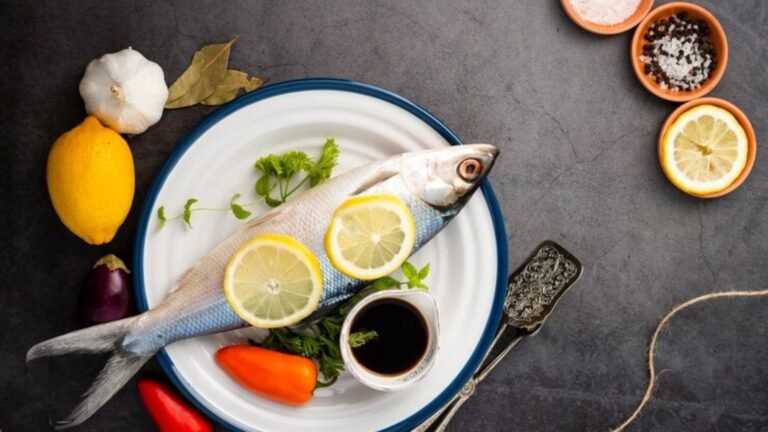Oranda, a captivating seafood delicacy, has gained attention in culinary circles for its unique taste and intriguing preparation methods. Often overshadowed by more common seafood options, oranda offers a distinctive flavor profile that tantalizes the taste buds. This guide delves into everything you need to know about oranda, from its origins to culinary uses, nutritional benefits, and preparation tips.
What Are Oranda?
Oranda refers to a type of seafood that is particularly cherished in certain culinary traditions. It is often found in coastal regions, where it thrives in nutrient-rich waters. Known for its striking appearance and robust flavor, oranda is typically characterized by its firm texture and slightly sweet taste. This seafood delicacy is usually harvested from the wild, making it a prized catch among fishermen and chefs alike.
Origin and Habitat
Oranda are commonly found in the Atlantic and Pacific Oceans, thriving in rocky environments where they can cling to surfaces. They are often harvested along the coasts of Spain and Portugal, where they are celebrated for their quality and flavor. The harvesting process is labor-intensive, contributing to their status as a delicacy.
Unique Features
One of the most striking features of oranda is its appearance. Often resembling small, elongated shells, they have a tough exterior that protects the tender flesh inside. This unique structure not only makes them visually appealing but also contributes to their distinctive texture when cooked.
Culinary Uses of Oranda
Oranda is versatile in the kitchen, lending itself to various cooking methods and flavor pairings. From traditional dishes to modern interpretations, there are countless ways to enjoy this seafood delicacy.
Traditional Dishes Featuring Oranda
In many coastal regions, oranda is a staple in traditional recipes. One popular dish is “percebes al ajillo,” where oranda is sautéed with garlic and olive oil, enhancing its natural flavors. Another classic preparation involves steaming oranda, allowing its subtle sweetness to shine through.
Popular Cooking Methods
Grilling: Grilling oranda gives it a smoky flavor that pairs well with lemon and herbs.
Steaming: This method preserves moisture and allows the seafood’s natural taste to be highlighted.
Sautéing: Quick sautéing in olive oil or butter adds richness and depth to the dish.
Flavor Profile and Pairing Suggestions
Oranda has a delicate yet robust flavor that complements a variety of ingredients. It pairs beautifully with citrus, garlic, and fresh herbs. For a complete meal, consider serving oranda’s alongside roasted vegetables or a light salad to balance its richness.
Nutritional Benefits of Oranda
In addition to its culinary appeal, oranda’s is also a nutritional powerhouse. Packed with essential nutrients, it can be a healthy addition to your diet.
Overview of Nutritional Content
Oranda’s is rich in protein, omega-3 fatty acids, vitamins, and minerals. A serving of oranda’s provides a significant amount of B vitamins, which are essential for energy metabolism, as well as selenium, which plays a crucial role in antioxidant defense.
Health Benefits
Heart Health: The omega-3 fatty acids found in oranda’s can help reduce inflammation and promote heart health.
Weight Management: High in protein and low in calories, oranda’s can be a beneficial choice for those looking to manage their weight.
Boosted Immunity: The vitamins and minerals in oranda’s support immune function, helping the body fend off illnesses.
How to Prepare Oranda
Preparing oranda’s at home can be a rewarding experience. With the right techniques, you can create delicious dishes that showcase its unique flavor.
Step-by-Step Preparation Guide
Cleaning: Rinse oranda’s under cold water to remove any sand or debris. Use a brush if necessary.
Cooking: Choose your preferred cooking method (grilling, steaming, or sautéing).
Serving: Serve immediately with a squeeze of lemon or a drizzle of olive oil.
Tips for Cleaning and Cooking
Always use fresh oranda’s for the best flavor and texture.
Avoid overcooking, as this can make the seafood tough and chewy.
Experiment with different seasonings to find your favorite flavor combinations.
Common Mistakes to Avoid
Not cleaning thoroughly, which can result in gritty texture.
Overcooking, leading to a rubbery consistency.
Skipping the resting period after cooking, which allows the flavors to meld.
Where to Find Oranda
Finding high-quality oranda’s can elevate your culinary experience. Here are some tips on where to source this seafood delicacy.
Best Markets and Seafood Suppliers
Local Fish Markets: Check for specialty seafood markets in coastal regions.
Online Seafood Retailers: Many reputable companies offer fresh oranda’s shipped directly to your door.
Farmers’ Markets: Look for vendors that specialize in local seafood products.
Seasonal Availability
Oranda’s is typically in season during the warmer months, making it more accessible in spring and summer. However, availability may vary based on regional harvesting practices.
Tips for Selecting Fresh Oranda
Look for a clean, ocean-like smell.
Choose oranda’s with a firm texture and shiny appearance.
Avoid any with a dull color or a strong fishy odor.
Conclusion
Oranda’s is more than just a seafood delicacy; it is an experience that combines unique flavors, culinary versatility, and nutritional benefits. Whether you enjoy it in traditional dishes or modern preparations, this seafood will surely impress. Dive into the world of oranda’s and discover why it deserves a place on your dinner table.
ALSO READ:Discover Percebes: The Ultimate Seafood Delicacy At One New York Plaza
FAQs
What does oranda taste like?
Oranda has a delicate, slightly sweet flavor with a firm texture, making it a delightful addition to many dishes.
How should oranda be cooked?
Popular methods include grilling, steaming, and sautéing, each enhancing its unique flavor.
Are oranda healthy to eat?
Yes, oranda is rich in protein and omega-3 fatty acids, making it a nutritious choice.
Where can I buy fresh oranda?
Look for local fish markets, online seafood suppliers, and farmers’ markets for the best options.
Can I substitute oranda in recipes?
If oranda is unavailable, consider using other shellfish like clams or mussels for similar flavors and textures.

